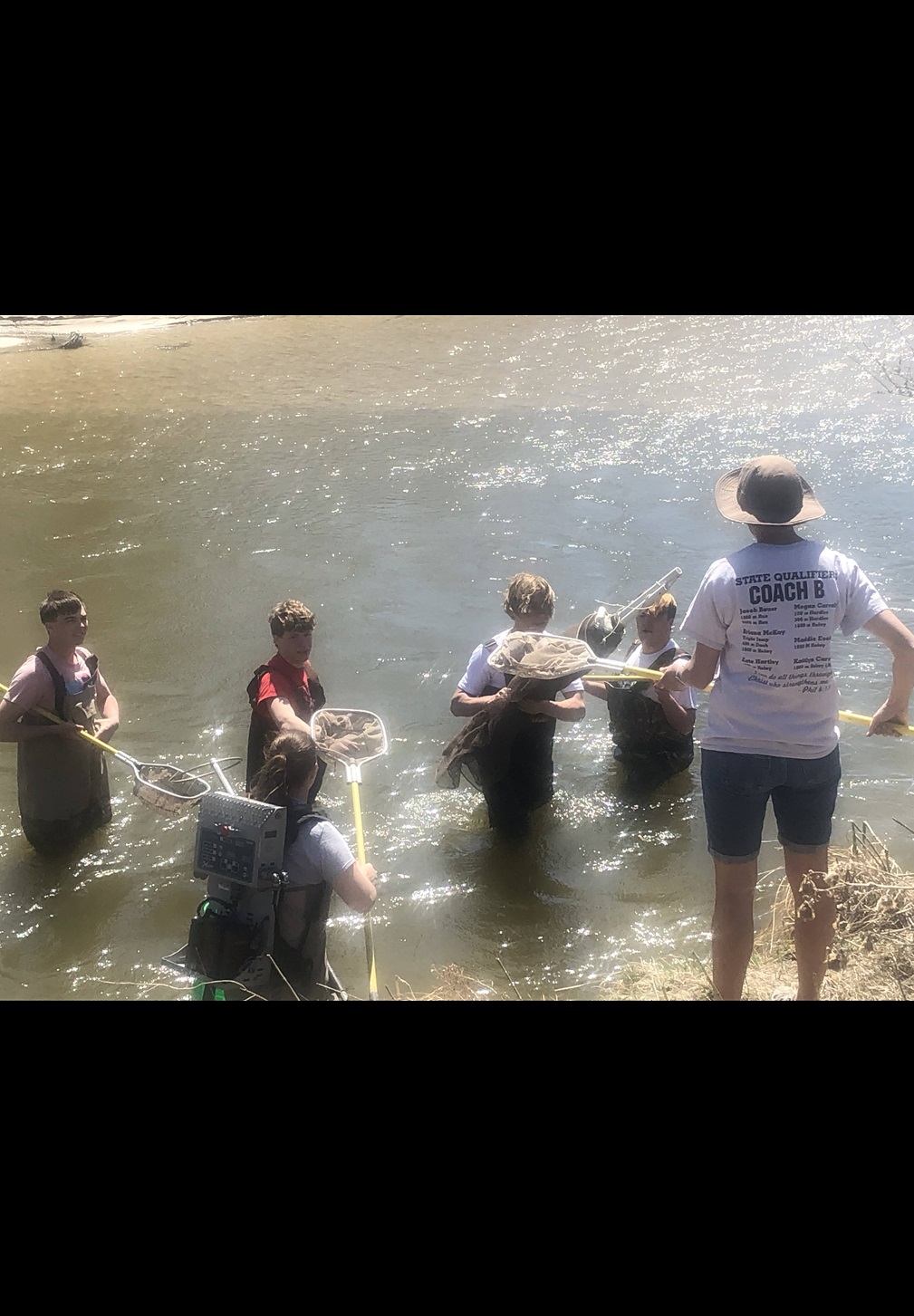Stacey Bauer, science teacher with Spalding Academy, received a PIE (Public Information and Education) Mini-Grant Award from Nebraska Academy of Sciences and the Nebraska Environmental Trust (NET). She was involved in obtaining data from 20 years ago, on a water feature in the Greeley County community, and planned for her students to do follow-up testing—to see what changes may have occurred in those years.
PIE Grants support the presentation and dissemination of information and perspectives that will stimulate enhanced environmental stewardship in any category eligible for NET funding. The grant program seeks to expand dialogue on important conservation topics and to provide information on emerging or highly useful conservation methods.
With PIE grant funding Bauer ordered colorimeterion chromatography equipment, but the devices were back-ordered. To do the testing in a seasonal timeframe similar to the earlier data, plus fit her academic schedule, and to complete the project in a timely way, she needed equipment sooner rather than later.
Bauer knew Shannon Bartelt-Hunt, Ph.D. (chair of the University of Nebraska-Lincoln’s Civil and Environmental Engineering Department) as a leader in the state’s water quality efforts. Bartelt-Hunt connected her with Jodi Sangster, Nebraska EPSCoR’s Outreach Coordinator and a former mentee of Bartelt-Hunt. Sangster’s Ph.D. in environmental engineering focused on water quality and her current work includes providing mobile lab kits to teachers statewide, through the Young Nebraska Scientists (YNS) program. Sangster’s connections included a chemistry professor at the University of Nebraska at Omaha (UNO), Dana Richter-Egger, who was upgrading his lab’s teaching equipment and had arranged for the older equipment to shift and serve in the YNS Mobile Labs. Sangster helped Bauer become the first user of the ion chromatography equipment that UNO transferred to YNS.
Bauer began the grant-funded unit by teaching her students about watersheds. She brought students together during the summer break to do hands-on water testing at Spalding’s water diversion, located near the school. Bauer worked with Spalding Academy teachers to integrate the water testing project across math and English classes, for middle and high school students. The students learned how to work with the data numerically, and to understand and express key findings from the research—in addition to the thrill of observing “yucky, wiggling creatures” in samples viewed at her classroom microscopes. (The students were especially fascinated by the planktonic larvae of the mayfly and damsel fly, Bauer said.) Her 2023 study also included water testing upstream and downstream; the students found higher levels of nitrates (typically from agricultural fertilizer runoff) in the upstream samples.
One group of Bauer’s students explored further by using GPS coordinates and mapping to access Google Earth photos, reflecting on local environmental changes over time--caused most dramatically by flooding in 2010 and especially 2019. The students also attempted to connect those images with changes they found in the water’s species over time—fewer macro-invertebrates, but an increase in the quantity and diversity of plankton.
Bauer gave herself an additional assignment: to share the findings at Spalding’s annual Village Board meeting, helping her summarize the work to the funder. All together, the project was “bigger than I imagined,” she said, and credited many people in her educational ecosystem for making it a successful learning experience for her students, her community, and herself.

Courtesy photo: Spalding Academy students (in water) learn with their teacher, Stacey Bauer (on land), as they test water quality and engage in citizen science.
###